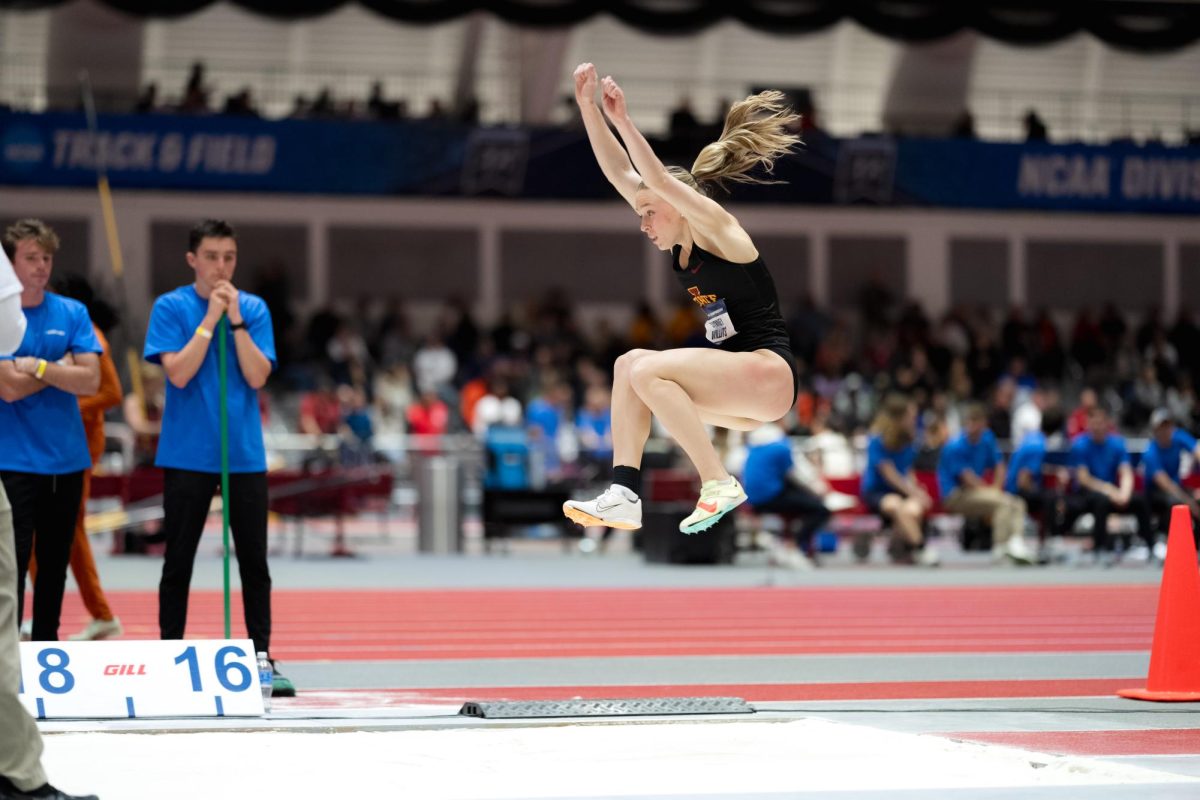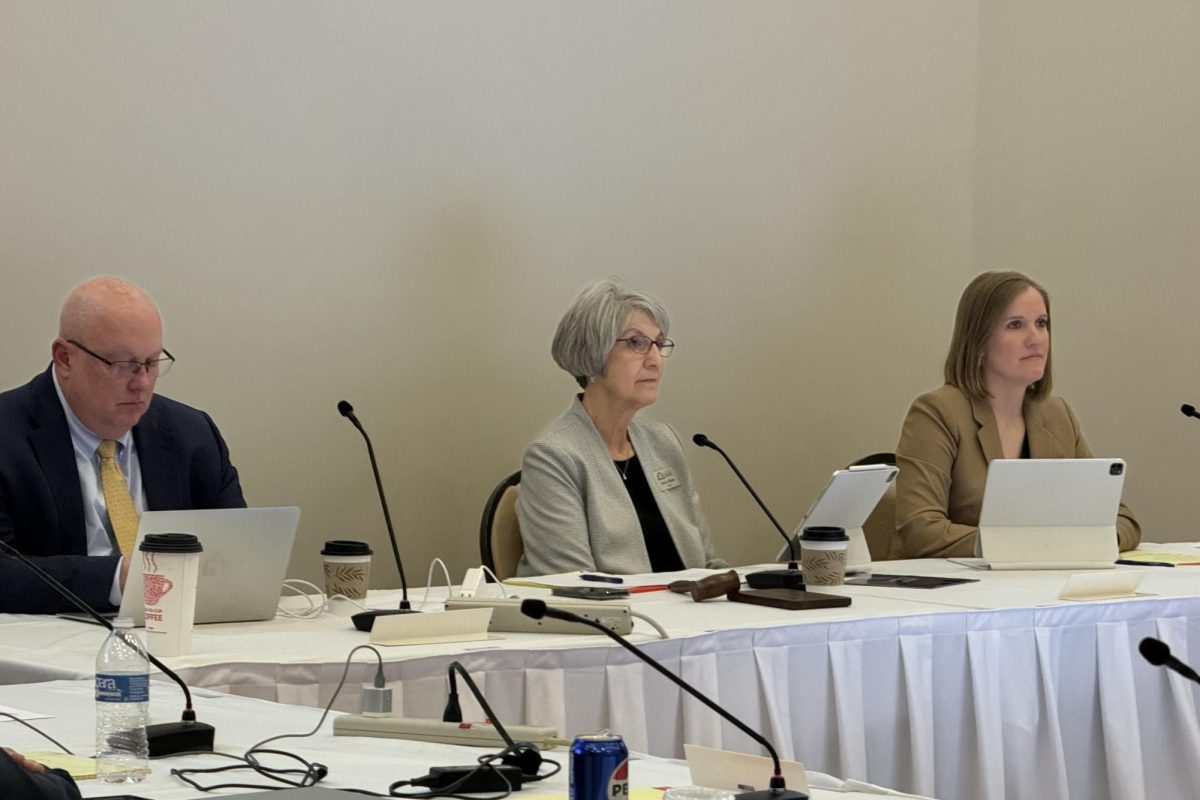Stem cell research legislation helps ISU sophomore
March 8, 2011
Don Reed has been advocating stem cell research since the day he watched his son, a once-thriving college football player, become a quadriplegic.
Today, his support of the research has aided in the development of treatments that could save the lives of millions, including one ISU sophomore.
Roman Reed was playing football for Chabot College in Hayward, Calif., in 1994 when a tackle left him paralyzed from the shoulders down. From the start of the play to the snap of his son’s neck, Don Reed will never forget the game that changed their lives forever.
Fifteen years later, and about 1,400 miles away, ISU sophomore Nick Lacina also received a life-altering blow.
While preparing for his senior-year track season at Marshalltown High School, he began experiencing abnormal pains and noticed that he was running slower than he had as a freshman. After visiting the doctor he was sent to Iowa City, where he was diagnosed with acute lymphoblastic leukemia.
While these events may seem unrelated, they are connected by a medical development that has the potential to find cures for both Reed and Lacina.
Stem cell research has already made great strides in developing treatments for cancer, genetic disorders and spinal cord injuries.
In leukemia patients, stem cells are often transplanted to create new blood cells after bad cells have been destroyed.
“If an ALL patient will relapse and the cancer returns, that means the chemo probably isn’t strong enough to kill off whatever cell is replicating those bad cells,” Lacina said. “Stem cells can play a key role in ALL treatment when the initial treatment doesn’t work.”
Lacina, who receives monthly chemotherapy treatments, hopes he can make it into remission without a stem-cell transplant, but he has seen stem cells save the lives of friends.
Don Reed, on the other hand, would like nothing more than a stem-cell treatment for his son. After the incident occurred, Don began his search for anything that could restore some of Roman’s mobility.
“By going deep in debt we were able to get some function back, which allowed him to transfer himself from the bed to the wheelchair, but we wanted more,” Don said.
It was then that he realized stem cell research offered promise beyond anything he could have imagined.
But being one of the most controversial issues among all medical research, developments were not made easily. The research done on spinal cord injuries comes from embryonic stem cells, which means a fertilized human embryo is needed for the transplants that could restore mobility to those in paralysis.
These embryos come from eggs that were fertilized at in vitro fertilization clinics but were not implanted in a woman’s uterus because she no longer needed them.
Many people consider this unethical, and “personhood” legislation has been introduced across the nation in an attempt to prevent the research altogether.
Personhood protects life from the moment of conception, and would rule the destruction of these embryos as murder. Don works tirelessly, lobbying against these bills.
“Personhood legislation would shut down the entire field of embryonic stem cell research,” Don said. “They’re saying that a dot of living material in a dish of saltwater is equally as important as my paralyzed son who sits in his wheelchair.”
Although most of his developments have been made in his home state of California, he reaches out to the entire nation seeking support for his cause.When he saw that personhood legislation had been introduced in Iowa, he wanted to let the state know that the bill would prevent more than just abortions.
He also recognizes that even without laws preventing the research, funding is hard to find.
Wanting to change this, he started from scratch in an attempt to create a law that would enable the groundbreaking research.
“The first thing I did was just send out letters to everyone,” Don said. “I had no idea how these things were done.”
He sent separate letters to each of the U.S. senators and representatives. When the bill was introduced, he spent countless hours sending letters to anyone he could think of, encouraging them to lobby for the legislation.
“Before you go to the committee hearings, you want to have as many people as possible from that legislative committee to hear from their constituents,” Don said.
He contacted constituents of each district and asked them if they knew anyone in a wheelchair. They would then send out letters to their representative, and support grew stronger with each hearing.
After about two years, his efforts paid off. The Roman Reed Spinal Cord Injury Research Act was passed in 1999.
In the law’s first 10 years of existence, it generated $14 million of state funding, but it gave way to funding from across the nation.
“It attracted $63 million in out-of-state funding because if a scientist does well in a small amount, then they’ve got a track record,” Don said. “They’ve got proof of concept.”
With this money, researchers have made great strides. Don was able to see the capabilities of stem cells firsthand.
“I held in my hand a rat that had been paralyzed and walked again,” Don said.
The research has gone so far that it has been taken all the way to human trials, which are currently being conducted.
But California’s promising stem cell program offers hope for more than just those with spinal cord injuries. In November, a cancer patient became the first to receive an embryonic stem cell injection in an attempt to cure brain cancer.
The state’s researchers continue to study stem cells and are gaining a better understanding of how cancer cells develop with each new project.
Lacina recognizes that the stem cells he could need do not just come from human embryos.
“Everybody has stem cells,” he said. “They’re also found in umbilical cords and placentas.”
He does not disagree with personhood legislation that would prevent abortion, but he feels that stem cell research should continue. Although he doesn’t see an immediate “cure” for cancer arising, he has seen stem cells save lives.
“When I think of a cure for cancer, I think of a treatment course that will make sure you don’t relapse again, and in that sense, I do think that stem cells hold promise in keeping cancer survivors from relapsing,” Lacina said.
Don feels that personhood legislation, such as House File 153, which was introduced in Iowa on Jan. 28, is unfair to those suffering from a chronic illness. He continues to lobby against this legislation and is always searching for ways to inform as many people as possible of the benefits of stem cell research.
“Every person in the world is benefited by the advancement of medical research. We’re not separated by politics or by nationality, or by creed or color when disease strikes,” Don said. “We have to stick together on this; we can’t allow ourselves by fear or ignorance to be taken away from our goal of giving everybody the best medical treatment science can provide.”
















